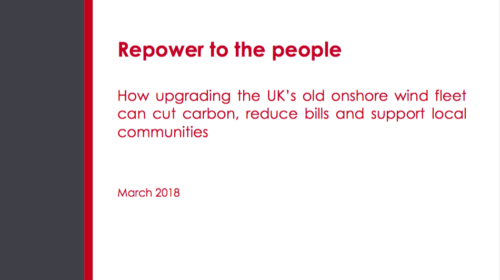Repower to the people
How upgrading the UK’s old onshore wind fleet can cut carbon, reduce bills and support local communities
Last updated:
As one of the first nations to invest heavily in wind power, the UK is increasing reaping the rewards of supporting a rapidly growing industry. We are seeing records broken in renewable generation nearly every year, dramatic falls in the cost of contracts for electricity from wind, and a growing manufacturing and service sector to support an industry that is on the up both at home and around the world.
A number of the first wave of UK onshore wind farms are now approaching the end of their terms. At this stage in the life of a wind farm, the owner is presented with three options:
- dismantle the site
- extend the land lease and planning consent, and sweat the assets for as long as financially viable
- ‘repower’ the site – upgrading to the latest and most efficient equipment.
This report finds that, across England, Scotland and Wales, owners of more than 750 turbines across nearly 60 sites will face this decision within the next five years. These wind farms were installed around the turn of the millennium, when turbine technology was less developed and costs higher. Repowering these sites and taking advantage of the ever-lower prices of onshore wind (as seen in auctions across Europe) would yield a net increase in capacity of more than 1.3 gigawatts (GW), and an electricity output of more than 3 terawatt hours (TWh) per year – enough to power nearly 800,000 homes, based on conservative estimates. It would also accelerate progress towards meeting carbon targets – acceleration that the government acknowledges is needed. This could all be achieved without the need to develop new sites, and via subsidy-free contracts.
